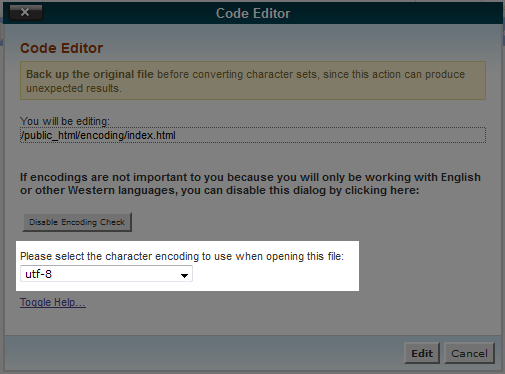
- #Check text encoding how to#
- #Check text encoding .dll#
- #Check text encoding install#
- #Check text encoding update#
- #Check text encoding full#
#Check text encoding full#
NET 5 and later versions, other encodings are available by using the class or by deriving from the class.Ĭode pages whose EncodingInfo.Name property corresponds to an international standard do not necessarily comply in full with that standard. NET Framework, the availability of other encodings listed in the table depends on the operating system. NET implementation, regardless of the underlying platform. NET 5 and later support column indicates that the code page is natively supported by that. It lists each encoding's code page number and the values of the encoding's EncodingInfo.Name and EncodingInfo.DisplayName properties. The following table lists the encodings supported by. Use the GetEncoding method to obtain other encodings, and call the GetEncodings method to get a list of all encodings. Often one of the derived Unicode classes is the correct choice for your app. The Encoding class is primarily intended to convert between different encodings and Unicode.

Also available through the UTF32 property. Both little endian (code page 12000) and big endian (code page 12001) byte orders are supported. UTF32Encoding encodes Unicode characters using the UTF-32 encoding.

Also available through the Unicode property and the BigEndianUnicode property. Both little endian and big endian byte orders are supported. UnicodeEncoding encodes Unicode characters using the UTF-16 encoding. Also available through the UTF8 property. This encoding supports all Unicode character values. UTF8Encoding encodes Unicode characters using the UTF-8 encoding. Also available through the UTF7 property. UTF7Encoding encodes Unicode characters using the UTF-7 encoding. Also available through the ASCII property. This encoding only supports character values between U+0000 and U+007F. NET provides the following implementations of the Encoding class to support current Unicode encodings and other encodings:ĪSCIIEncoding encodes Unicode characters as single 7-bit ASCII characters. If you must encode arbitrary binary data into text, you should use a protocol such as uuencode, which is implemented by methods such as Convert.ToBase64CharArray. Note that Encoding is intended to operate on Unicode characters instead of arbitrary binary data, such as byte arrays. For information about the Unicode Transformation Formats (UTFs) and other encodings supported by Encoding, see Character Encoding in. In contrast, decoding is the process of transforming a sequence of encoded bytes into a set of Unicode characters. ' Ascii converted string: This string contains the unicode character Pi (?)Įncoding is the process of transforming a set of Unicode characters into a sequence of bytes. ' Original string: This string contains the unicode character Pi (Π) ' The example displays the following output: Display the strings created before and after the conversion.Ĭonsole::WriteLine( "Original String*: ", asciiString) String^ asciiString = gcnew String( asciiChars ) Convert the new Byte into a char and then into a string.Īrray^asciiChars = gcnew array(ascii->GetCharCount( asciiBytes, 0, asciiBytes->Length )) Īscii->GetChars( asciiBytes, 0, asciiBytes->Length, asciiChars, 0 ) Perform the conversion from one encoding to the other.Īrray^asciiBytes = Encoding::Convert( unicode, ascii, unicodeBytes ) String^ unicodeString = "This string contains the unicode character Pi (\u03a0)" Īrray^unicodeBytes = unicode->GetBytes( unicodeString )
#Check text encoding how to#
NET Char and String types are themselves Unicode, so the GetChars call decodes the data back to Unicode. This tutorial will show you how to quickly check and convert file encoding charsets on Unix based operational systems, such as Linux distros and Mac OS.
#Check text encoding .dll#
dll files.The byte array is the only type in this example that contains the encoded data.

dll file may have been moved or renamed by another application.Ĭheck to see if you already have on your computer.įor more information see how to search your PC for.

#Check text encoding install#
#Check text encoding update#
Update the application to the latest version.Re-Install the application that requires.Re-installing the application may fix this problem. This application has failed to start because was not found. If the file is missing you may receive an error and the application may not function properly. When an application requires, Windows will check the application and system folders for this.


 0 kommentar(er)
0 kommentar(er)
